The Fisk homestead on Isle La Motte was first settled by Reverend Ichabod Ebenezer Fisk. 100 acres of land was transferred to him on Oct 2, 1792 from Colonel Ira Allen, valued at a sum of 15 pounds as compensation for his services in surveying the island. The site where he made his home adjoined land which had been quarried for limestone mortar by the French in 1666 when they built Fort St. Anne on the northern end of the island and by the British Army who operated a limestone kiln on the point in 1760.
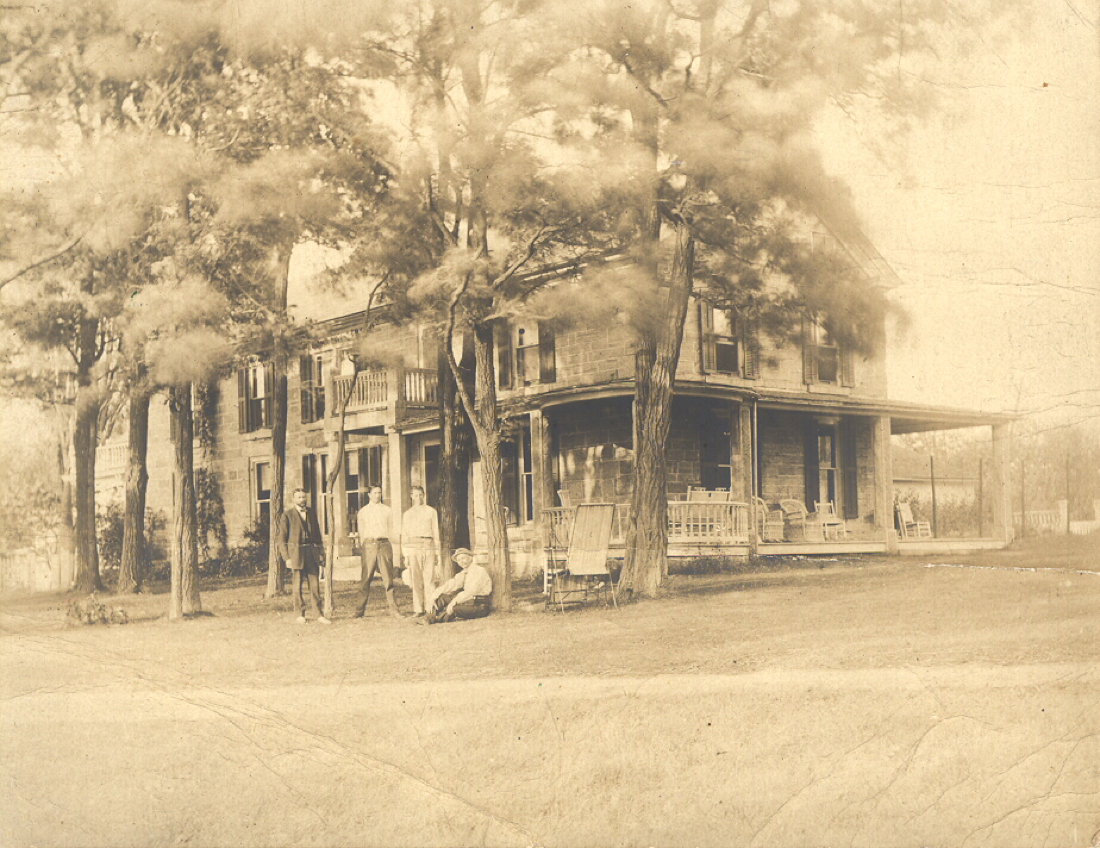
Ichabod’s son, Samuel Fisk began quarrying operations exporting a beautiful black limestone called “Isle La Motte black” sometimes referred to as marble as the limestone had partly metamorphosed to marble during it’s geologic history. In 1802 Samuel Fisk built the beautiful stone mansion. British officers were billeted in the house during the War of 1812.

Samuel Fisk also ran the homestead farm, which by then had been expanded to 350 acres. Samuel’s son Hiram eventually took over the family enterprises and, in 1865, built a general store south east of the mansion to serve the quarry workers and other locals. That store was added on to over the years and today is referred to as the Main House and is the primary residence. A stone ice house was built just south of the store to serve as cold storage for the store.
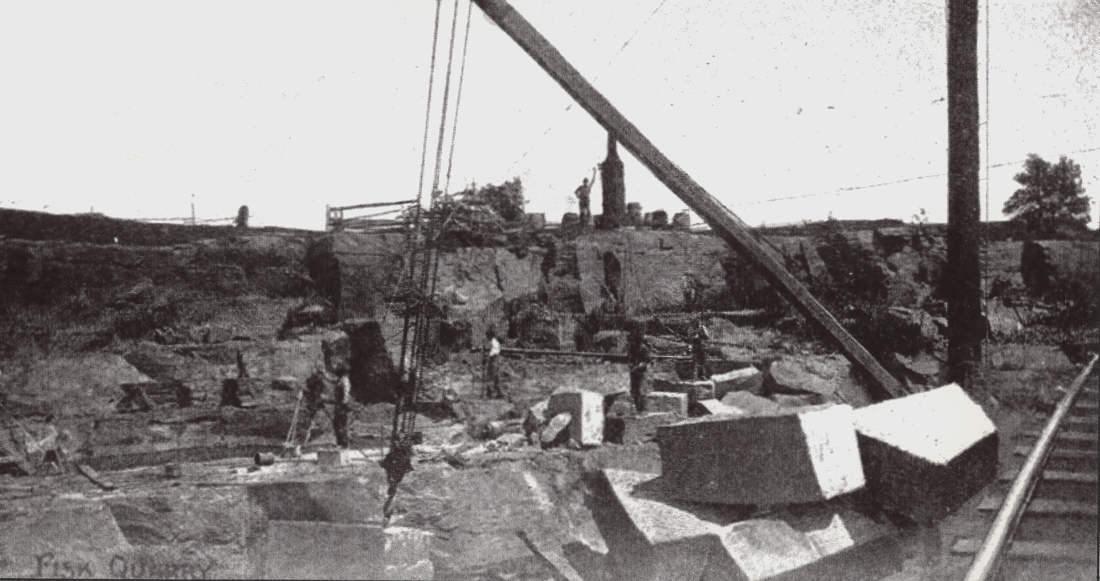
One of Hiram’s sons, Nelson W. Fisk, went to Eastman Business College in Poughkeepsie, New York. Eventually he took over the family concern.
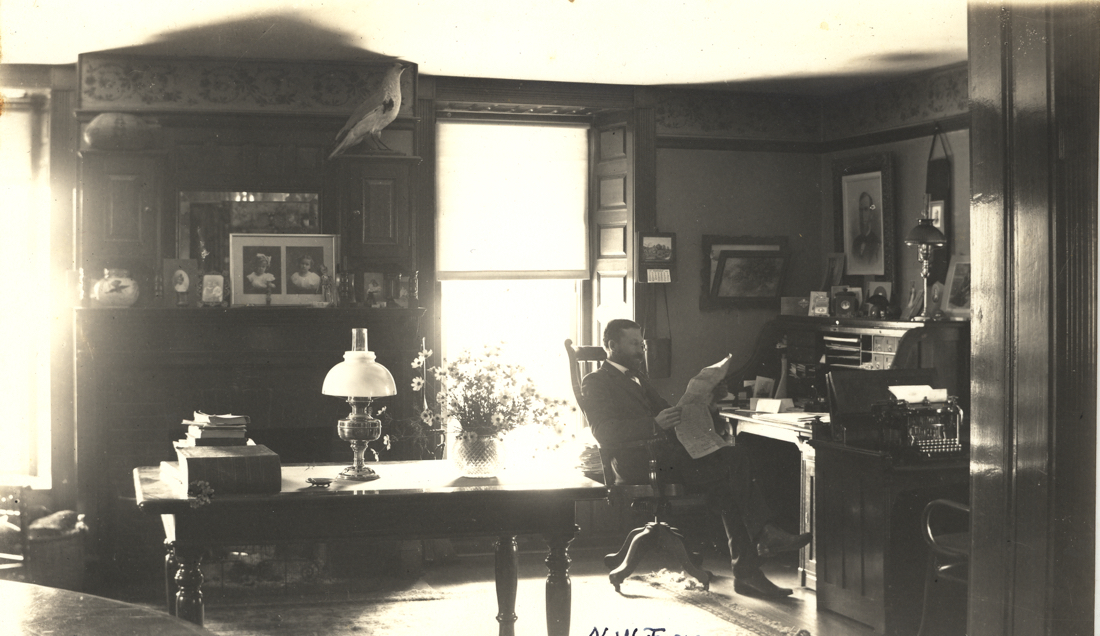
Nelson Fisk served as a State Representative and a State Senator, during which time he was instrumental in causing 3 bridges to be built in the area, including the first bridge between Alburgh, VT and Rouses’ Point, NY. In 1896, he was elected Lieutenant Governor. Nelson Fisk entertained President McKinley in 1897, President Roosevelt in 1901 and spent two days with President Taft during the Lake Champlain Tercentenary Celebration in July of 1909. He also donated the stone for the statue of Samuel du Champlain at St. Anne’s Shrine at the north end of Isle La Motte and served as a trustee for 3 schools, including the University of Vermont.
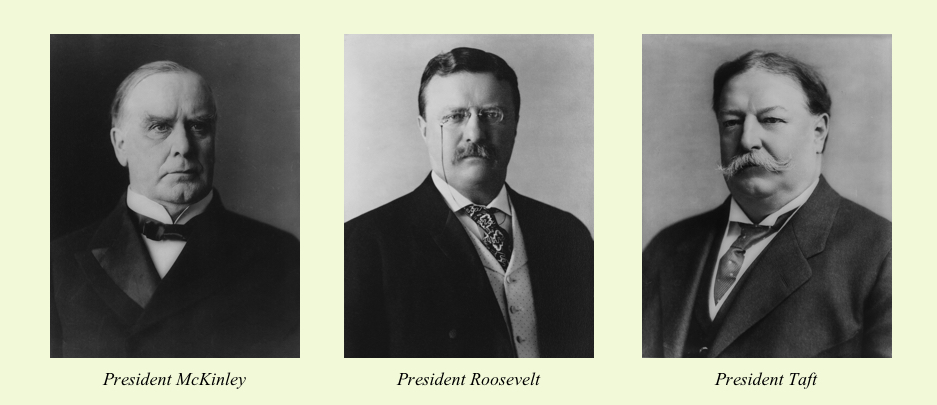
Roosevelt’s 1901 visit to Isle La Motte was marked by both tragedy and historic moment. Nelson Fisk had invited Vice President Teddy Roosevelt to a luncheon for the annual meeting of the Vermont Fish and Game League, to be held at the Fisk residence.
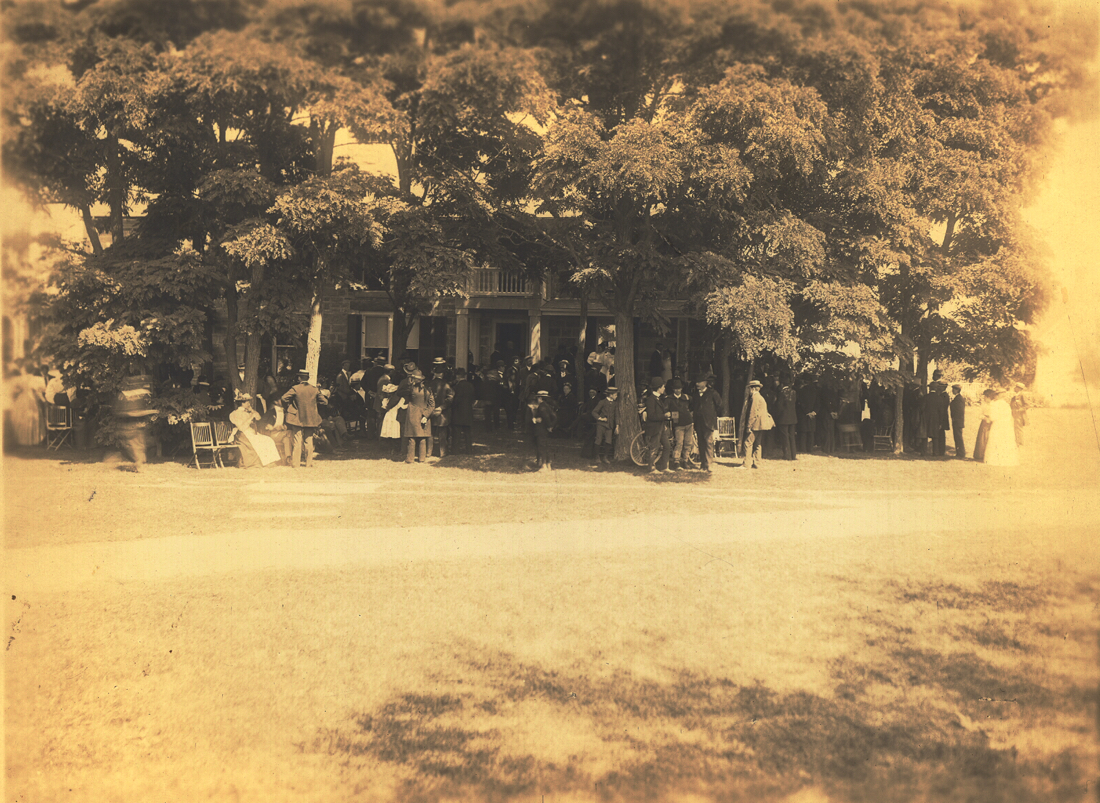
On Sept. 6, 1901, Vermont political notables and over 800 guests began to arrive, by horse and buggy, and by the great steamboats that plied Lake Champlain, disembarking at Fisk Dock opposite the quarry.
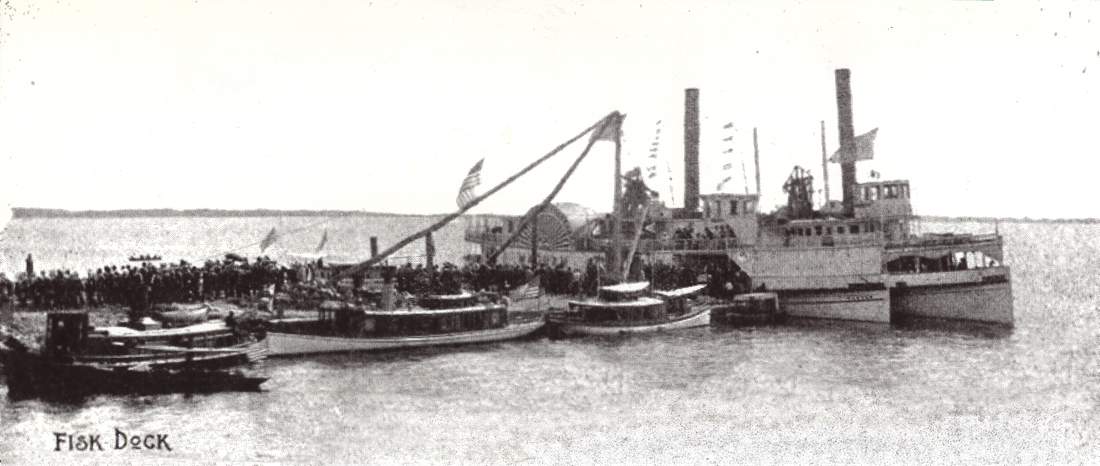
Guests in their Sunday best greet Vice President Roosevelt on Fisk Dock with flags flying,
surrounded by private motor yachts and double parked steam paddle wheelers.
A large tent was erected on the lawn and a luncheon was prepared and served by the Ladies Aid Society of the Isle La Motte Methodist Church.
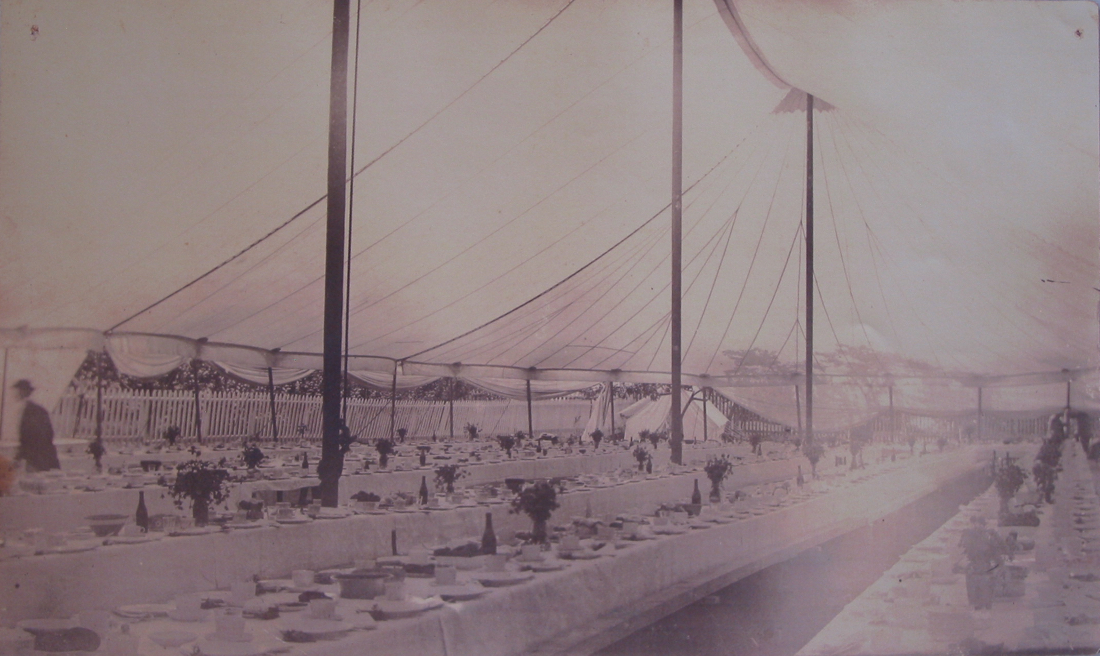
During the event, the telephone in the Fisk mansion, the only telephone on the island, rang. It was a message for the Vice President. President McKinley had been shot in Buffalo, NY.
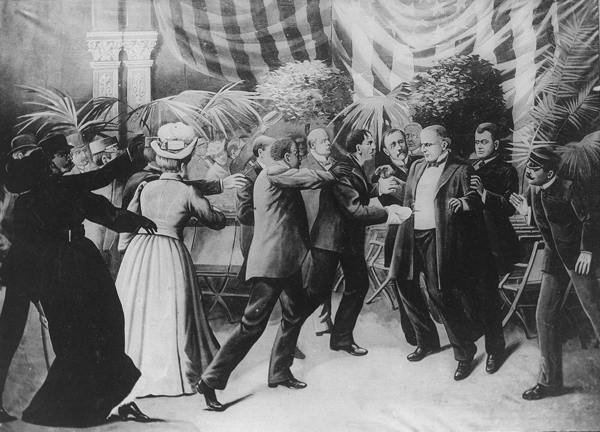
Roosevelt was rushed away by private motor yacht and crossed New York state by train to the President’s bedside. When it became apparent that McKinley might recover, Roosevelt continued his vacation in the Adirondacks. Eight days later, word came that the President had died.
Theodore Roosevelt was sworn in as the 26th President of the United States in Buffalo, New York and is recognized as the first conservationist president. In 2008, a Vermont Historical Marker was installed on the site by the Isle La Motte Historical Society.
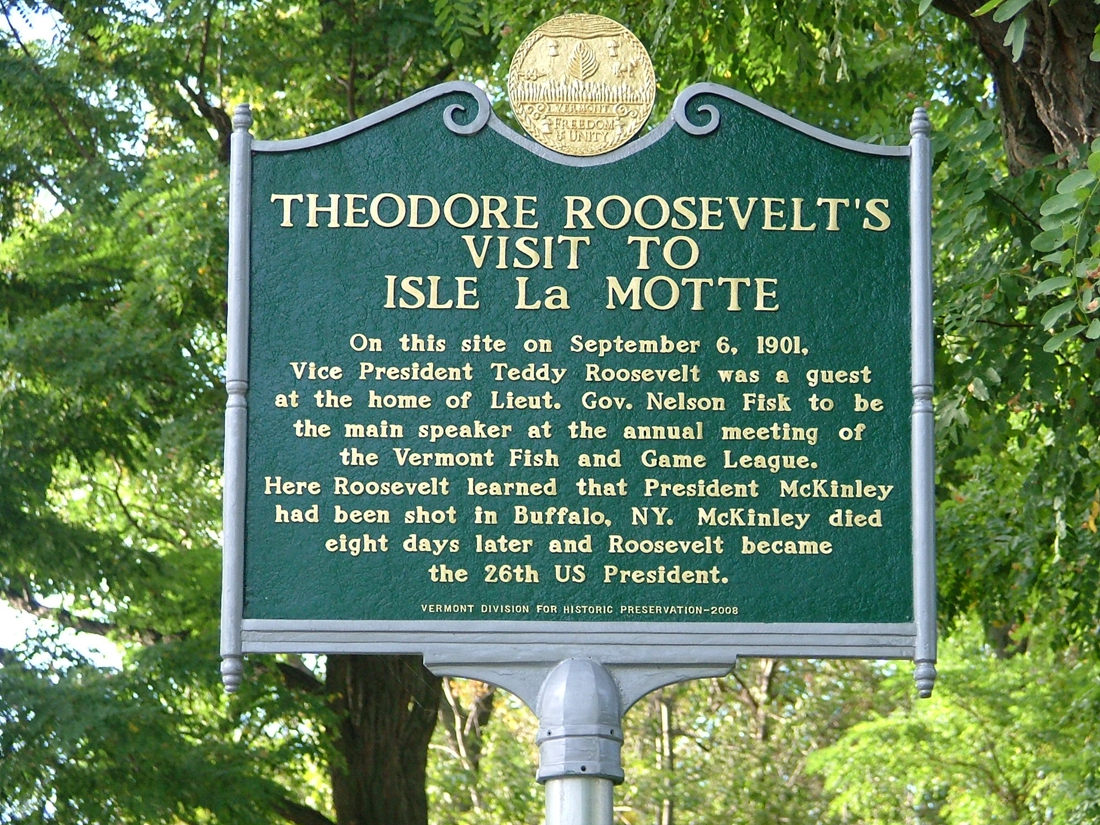
Nelson Fisk’s wife was Elizabeth Fisk, originally Elizabeth Hubbell from Chazy, NY. Elizabeth came from the prominent Platt family, founders of Plattsburg, NY.

She was a descendant of General Benjamin Mooers, who had been an adjutant to George Washington during the American Revolution, and then served as a general officer in the War of 1812 between the United States and Britain.
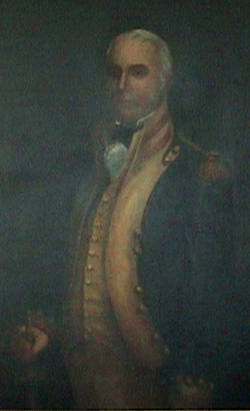
Elizabeth Fisk was well educated and well traveled. She studied with the famous American painter William Merrit Chase and took courses in art and dye chemistry at the Pratt Institute in New York city where she and Nelson kept an apartment in the winter.
On Isle La Motte, she took up weaving and created an island industry which involved many of the local young women, called the Elizabeth Fisk Looms. Their fine linens became famous around the country and were even known in England.
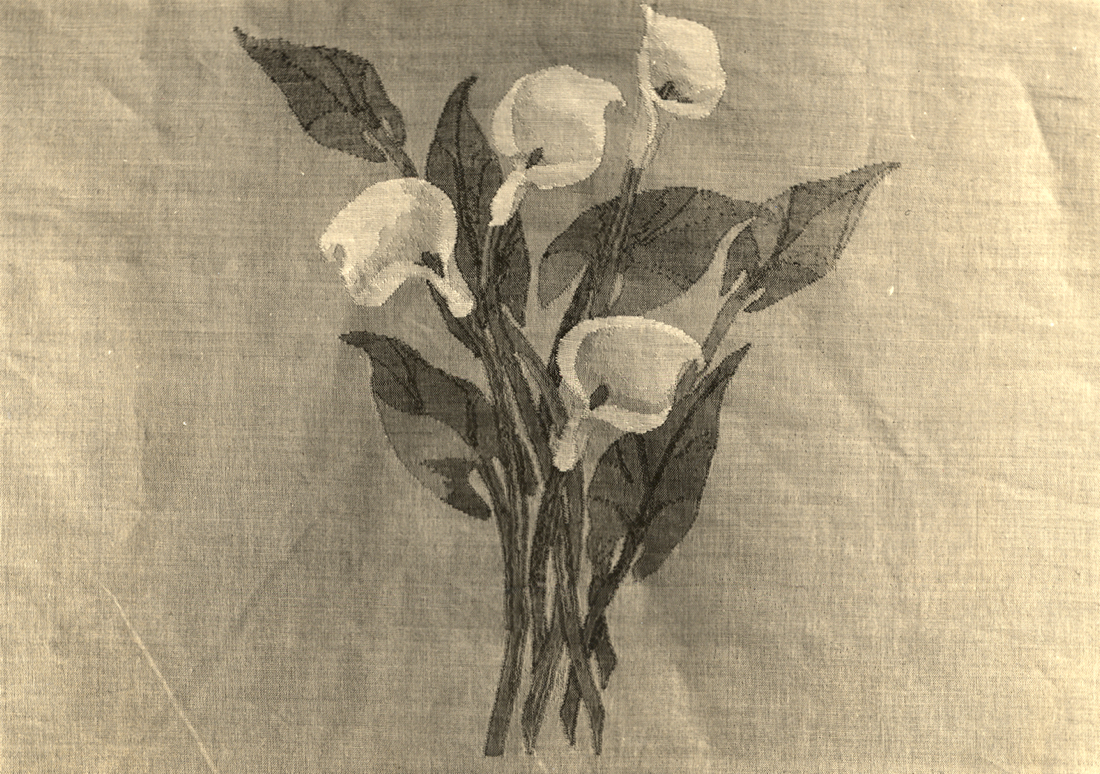
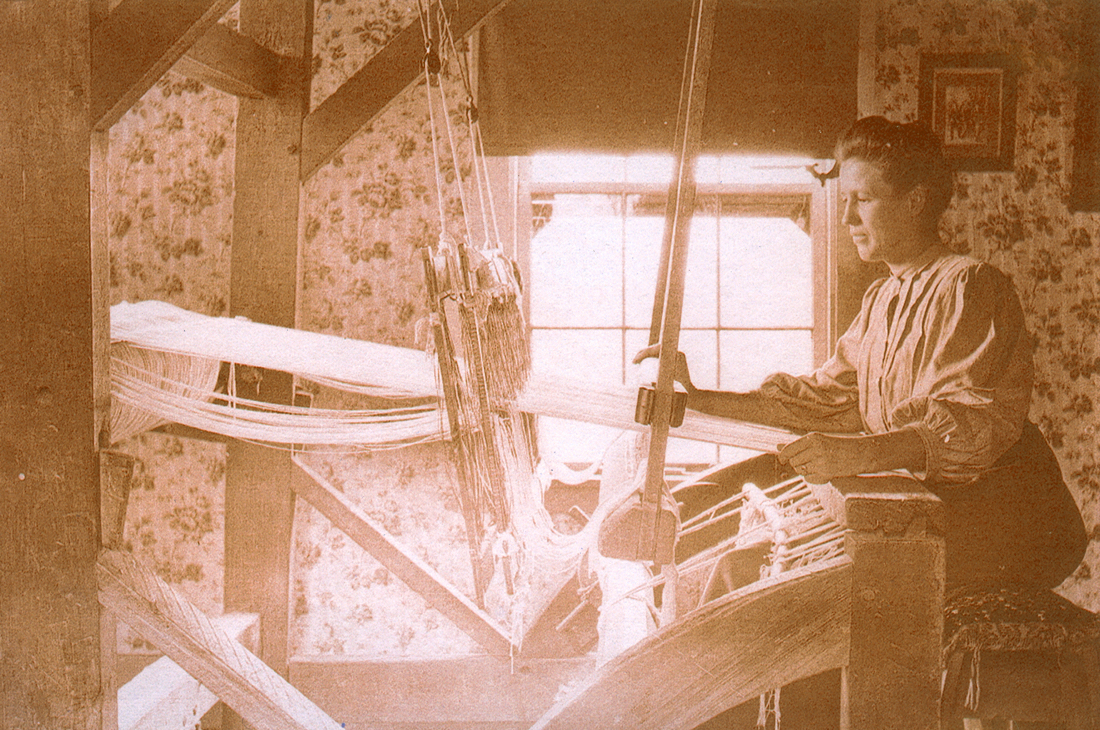
Nettie Fleury, one of the Elizabeth Fisk Looms weavers
The era of the Fisk family on Isle La Motte ended soon after the quarry was sold in 1919. Nelson Fisk died in 1923, the great stone house burned in 1924, and Nelson’s wife, Elizabeth, died in 1927. Most of the land was sold along with the horse & carriage barn to the Halls, a farming family on Isle La Motte who have run Hall’s Orchards for generations.

Nelson Fisk’s brother in-law Dr. Charles Whitcomb inherited the property. He had a dream to turn the property into a tuberculosis sanatorium. At the time, TB was not well understood and people frequently travelled north to get fresh air, in what was termed, “the northern cure” and out west for “the prairie cure.”

In October of 1930, Dr Whitcomb rebuilt the east wing of the mansion from rubble to serve as a workshop downstairs and his “studio-laboratory” on the second floor.
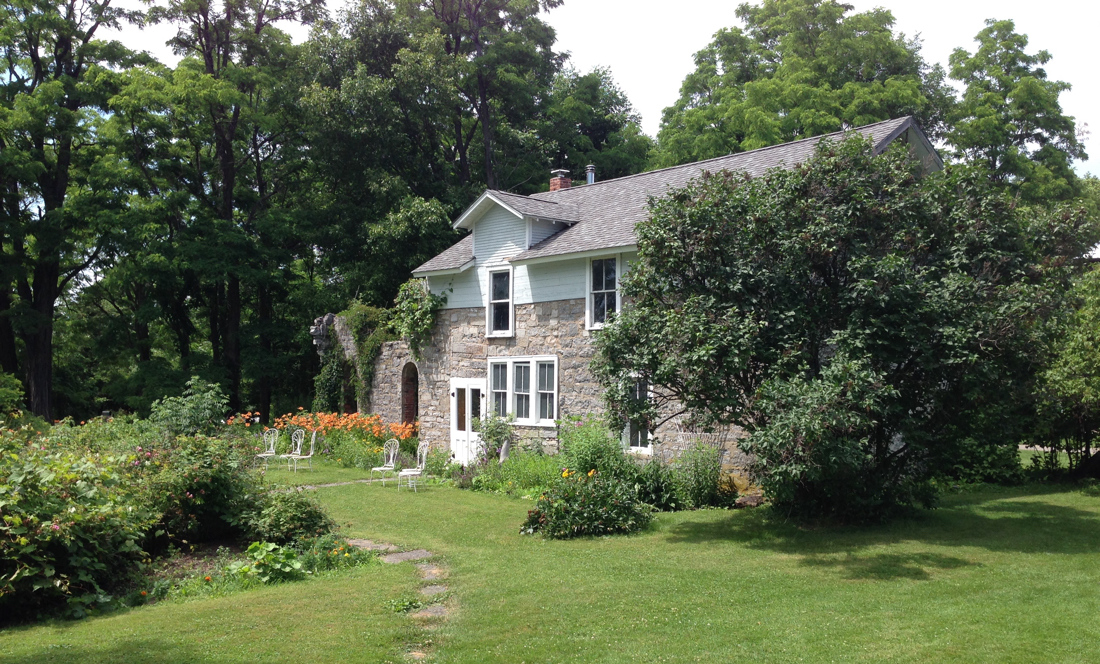
He also built a water tower to give the property it’s first continuous pressure water system. Around 1980, this tower was moved to the highest point on the south end of the island. The tower was heightened, stairs were added and an observation platform was built on the top to provide a commanding view for miles around.

At some point after this rebuilding, the two stone arches that make the transition from the workshop to the old foundation of the front of the house were added, presumably as a folly. They were not present in the original structure or the rebuilt workshop.
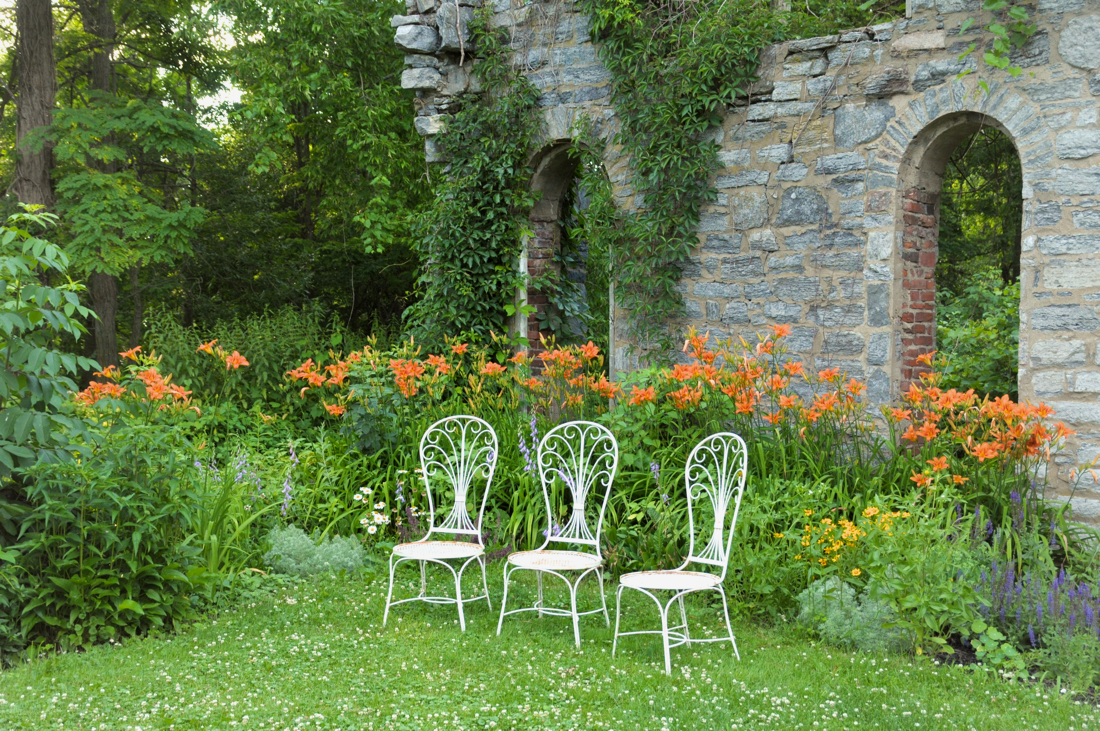
The property passed to unknown owners in the 1940s, then to the Robinson family, and was purchased by Lyle and Violet Fitch in 1970 for use as a summer retreat. By this time the property was in serious disrepair, and the extended Fitch/Andrews family spent the next 30 summers improving the property and gradually restoring much of it’s past glory. There was an unwitting Fitch family connection to the Fisks: the Fitch’s daughter Linda had married Peter Andrews. Peter is a descendent of Henry Scott, a soldier of the American Revolution whose daughter Mary Scott married Samuel Fisk.
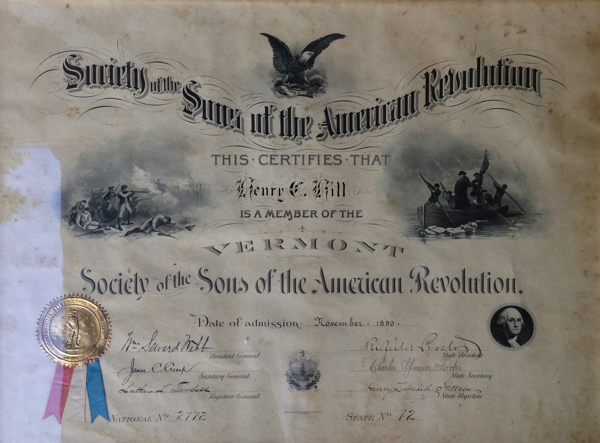
SAR Membership for Henry Hill, descendent of Henry Scott
By the mid 1990s, the old dairy barn had fallen down and Linda Fitch was distressed at the decaying state of the once noble horse and carriage barn.
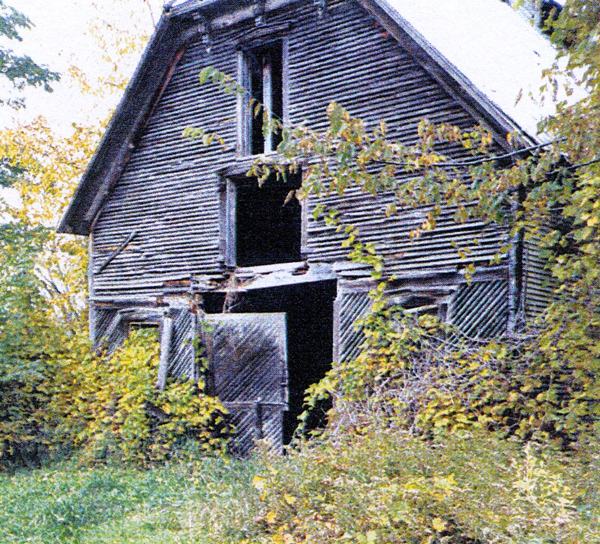
With much trepidation she purchased it from Alan Hall and undertook it’s restoration. The land around it was dense growth with first generation trees and grapevines, that was cleared and the foundation of the old dairy barn to the east was removed, creating a spacious and inviting lawn. The majority of the main beams and all of the sills in the barn were rotten and were replaced by new custom sawed 10″x10″ hemlock beams. A new roof, new siding, new doors and windows, some new floors and countless other items brought the barn back to a state of respectability. The renovated barn has been put to use as an art gallery, meeting space, concert hall, lecture hall and venue for wedding receptions, and community and family dinners.
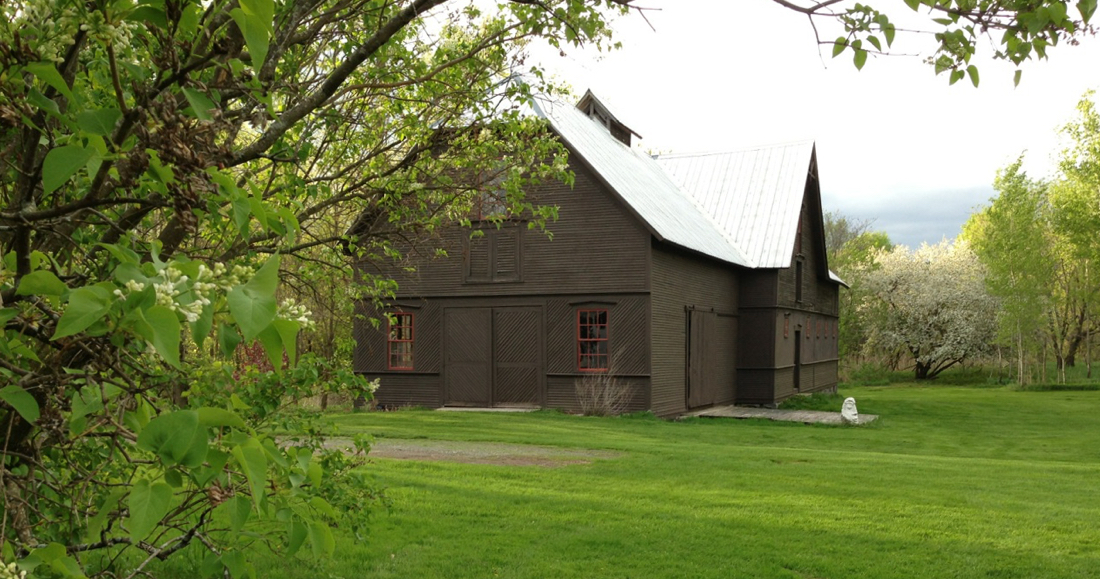
In 1995 Linda Fitch undertook the project of preserving the historic Fisk Quarry, whose black and grey limestone is part of the famous Chazy fossil reef, the oldest known biologically diverse reef, formed almost half a billion years ago. Today it is a geologic park and nature preserve.
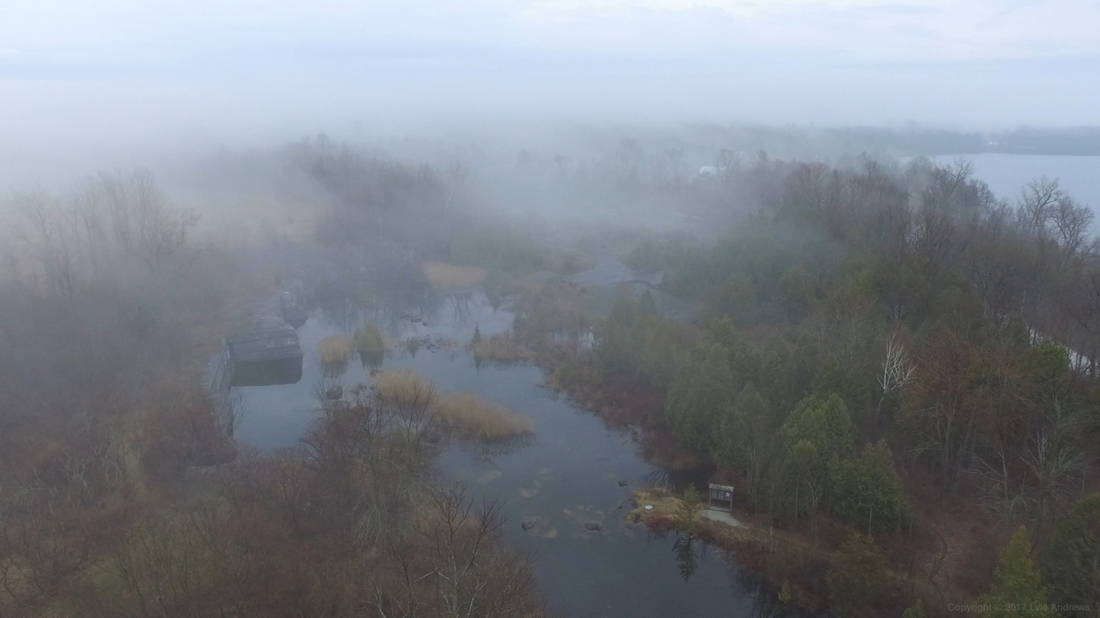
She founded the Isle La Motte Preservation Trust, a non-profit organization which now owns what is now called the Fisk Quarry Preserve and another geological site a mile to the northeast called the Goodsell Ridge Preserve.
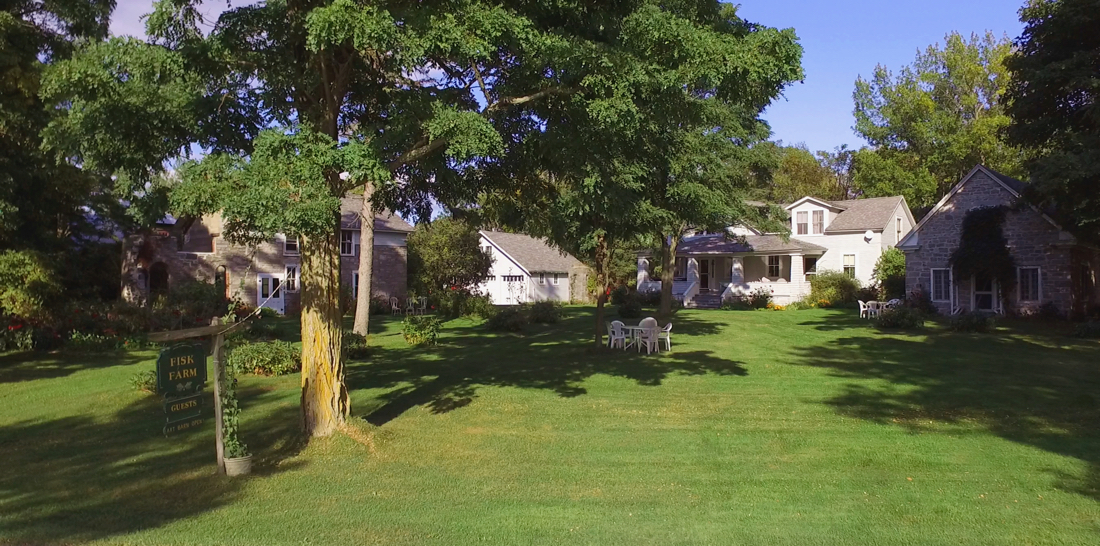
Fisk Farm today
